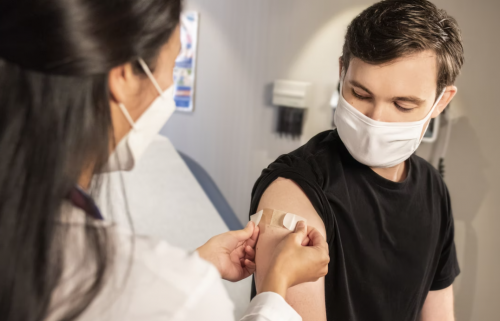
B is for Best Practice
Let’s make no bones about it. We only want to implement things that will work. We want to select and implement changes with evidence that they will make a difference for the people in our communities.
Implementation A-Z is our ongoing series about making the concepts of implementation science straightforward and accessible.
So how do we know what works well? There are two different sources of best practice. The first is evidence-based practice. Evidence-based practice has research studies and accumulated knowledge to say what works, under what conditions it works, and why it works.
This knowledge is traditionally found in academic journals or at academic conferences. However, many websites and databases try to curate up-to-date information on best practices.
The reality is though publishing scientific literature is such a huge and laborious process. Many people can’t devote the time and resources to getting an article together that meets the criteria and the standards that would go into a journal.
This isn’t because their work isn’t good or potentially valuable. Certain conventions dictate the structure of scientific articles. Adhering to these conventions takes time. And then add on the additional cost to either publish or access. It can all add up immensely.
Consequently, many cool ideas and innovations are floating around that never make it into the literature. This untapped knowledge comes from the experiences and home-grown data of people in the field doing work and innovating to solve problems. When we tap into this knowledge through our experiences and network, we are accessing practice-based evidence.
To have these types of innovation rise to the level of evidence, you need a good evaluation and measurement infrastructure. Say your school district has had a dropout prevention program for the past five years that connects at-risk students with adult mentors. With a good evaluation in place, you can understand whether a program like adult mentoring is having an impact.
No source of evidence is necessarily better than another. What is most critical is that you can be confident that your strategy will work because there is a history of evidence behind it. And by using an innovation with evidence, you can be more effective and efficient in your implementation project.
But wait? What if you’re addressing a compelling new problem where there is no previous evidence? In these situations, we still want to use as much information as possible. A coherent and straightforward theory of change can help us guide our work. A theory of change lays out what change you hope to see and what should cause that change. This method provides some baseline infrastructure to test and accumulate evidence that confirms or disconfirms your theory. Science in action!
Other resources
- The generous spirit of scientists. If you find a paper that you want to read, but you can’t access because of a paywall, just email the author that is listed first. Nine times out of ten, they’ll be delighted to send it to you!
- Cochrane assembles and curates high-quality evidence reviews. This is the place to see comprehensive syntheses about what has worked.
- Community Toolbox: The University of Kansas has a huge resource to help people engage in community-based work. As part of that, they reference over 70 different evidence-based intervention repositories. Check them out here.
- PubTrawlr. And yes, you can use PubTrawlr to summarize vast swaths of literature to understand trends and topics. See below for promo code to sign up!
Past and Future Entries
- A is for Adaptation
- B is for Best Practice
- C is for Champion (coming soon!)
Implement Better with PubTrawlr!




